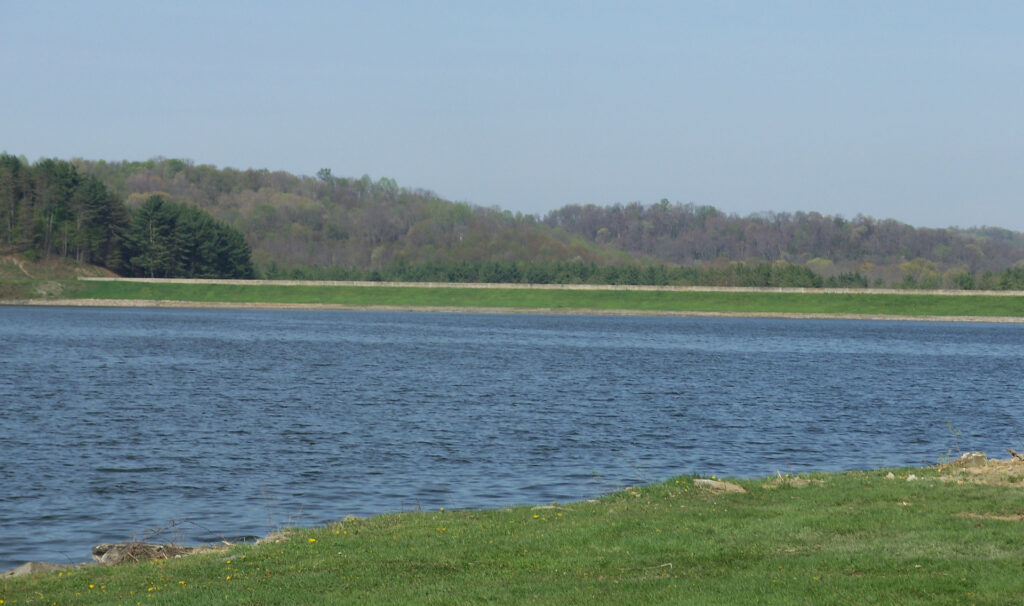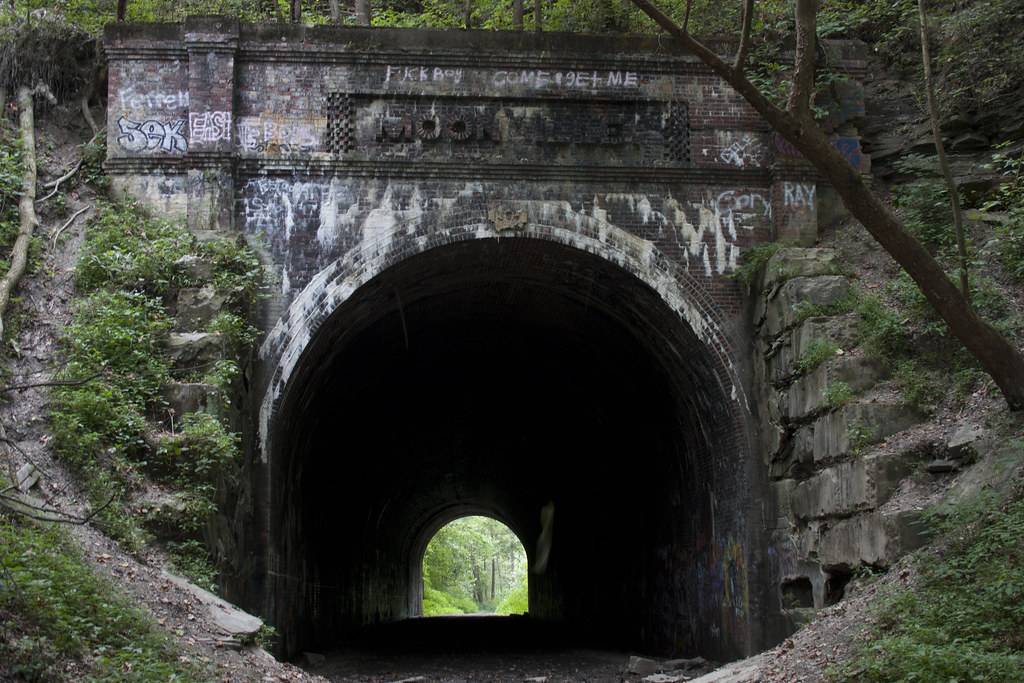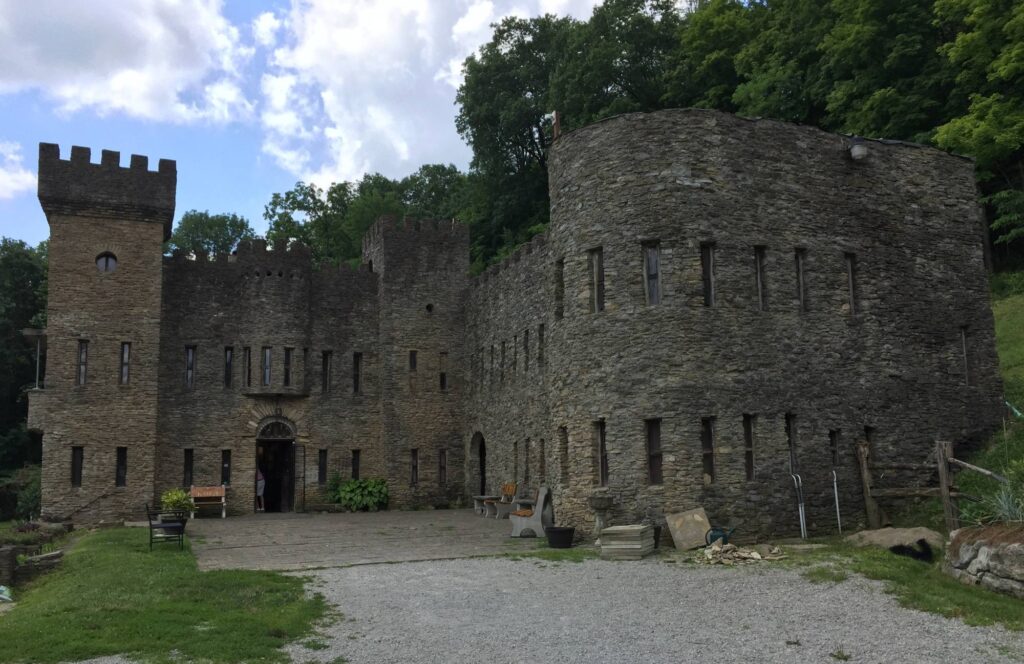As I began researching ideas of things to write about for The Ohio Project, I came across quite a few references to a place called Laceyville, Ohio. Some referred to it as either a Lost Town or a Ghost Town, while others listed it as “interesting” because it currently sits at the bottom of a lake. More modern guides associate the name with great fishing, and maybe a few nearby hiking trails.
The problem, at least for me, was that none of these references talked much about Laceyville, its history or geography, or what made it special. It seemed, the only thing that made Lacyville “interesting” was in the 1930’s the Muskingum Watershed Conservancy District created Tappan Lake with the help of the Army Corpse of Engineers that resulted in Laceyville now being at the bottom of a good-sized lake.
To be fair, this sort of thing might be a bit unusual, although Laceyville is far from the only place like it in the USA (or the rest of the world). But, is it “interesting”? Well, let’s just say that the jury was still out at that point. (Ok. It’s interesting, but not all that interesting.)
There is another thing that I found curious, too. Very near the village of Lacyville there had been an unincorporated community that went by the name Tappan. This is, of course, where Tappan Lake got its name. The creation of the lake also lead to its downfall, although the lake bears its name and people often refer to the area around the lake as Tappan.
So then why, I had to wonder, isn’t Tappan on these lists of Ghost Towns or Lost Places? Why just Laceyville?
The Founding of Laceyville
The Story of Laceyville begins with a man named John Stinson Lacey. At some point around 1805, he along with his parents and two brothers relocated to Ohio and settled in the Chillicothe area. During the War of 1812, he and his brothers enlisted in the National Army and served under General Harrison at Fort Meigs. In 1816, he moved to Cadiz, Ohio, where he and a cousin of his were contracted to build the town’s courthouse. From 1824 to 1826, he served as the sheriff of Harrison County. The following year, he was elected as the County Treasurer. Lacey had also built the Cadiz House (or New Arcade House) a tavern and lodging house, and acted as its proprietor. If that wasn’t enough, he also carried mail between Wheeling, West Virginia and Norwalk, Ohio.
By 1841, he’d had enough and decided it was time to settle down. He sold his hotel and built himself a nice house about eight miles up the road, near where a rather notorious tavern was operating. Perhaps finding retirement a bit too calm for his tastes, he soon opened his house as a stagecoach stop, offering weary travelers food and lodging. Soon, several others began moving into that same area and before long it was known as “Laceyville”.
The History of Laceyville
When studying history it’s fairly easy to overlook a small town (village) like Laceyville. It only existed for a relatively short period of time, all things considered. It is easy to think that because it never had the opportunity to grow, nothing of any historical value ever happened there. Yet, once I started looking into it, I was surprised about how much there was to find.
On May 27th, 1850 the Laceyville Post Office first opened their doors, closing for the final time on New Years Eve, 1907. After then, mail went through the Cadiz, Ohio post office.
Beyond the Lacey House inn, and the tavern and post office, the town also hosted a school, a general store, a blacksmith, a shoe maker and its own tailor. The town also boasted its own orchestra and baseball team, as well.
The Lacy Family had, through years of public service, managed to make friends with all sorts of people, including many of the more local well-known figures. This included the Gable family of Cadiz, Ohio made up of William, a Harrison County oil driller, his wife Adeline, and their son Bill, who were known to be frequent visitors at The Lacey House and who were often seen around town. Bill (Junior) was never called William or Bill. His father referred to him as just “the kid” but everyone else called him Clark. In 1924, “The Kid” Gable appeared in his first motion picture, White Man. Today, this film is considered a Lost Film, as there are no known copies of it in existence anywhere. Before the year was out, he’d appear as an extra in two further films, Ernst Lubitsch’s Forbidden Paradise and John Ford’s silent western The Iron Horse. In 1931, he’d appear in his first film with sound, the William Boyd Western, The Painted Desert. Before long he’d be appearing alongside names like James Cagney and Joan Crawford, Greta Garbo, and the list goes on. In 1938, after making three films with Spencer Tracey, it seemed like everyone wanted to make movies with this Clark Gable fellow… so, it’s safe to assume the guy some people refer to as “The King of Hollywood” did pretty good for himself.
Not long after Lacyville’s founding, rich deposits of coal were discovered throughout Harrison County, including the area surrounding Laceyville. While a few mines did operate close to town, they quickly proved to be not as profitable as larger mines elsewhere in the county and state. For a brief period, coal and oil did help boost the local economy. It just wasn’t stable enough for the long term.
When looking through historical records, one of the questions I kept asking myself was why Laceyville was a town in the first place. After Ohio’s entrance into statehood, villages, towns, and communities began being formed all across the state. Sometimes, these communities are based on some sort of religious or philisophical principles, but usually it has to do with natural resources, anything from rivers to Lake Erie or in areas where there are mines or huge farms… but, that doesn’t seem to be the case with Lacyville.
When Lacey sold his hotel and boarding house and moved to the area that would eventually bear his name, the only thing there appeared to be a popular tavern – one so popular people seemed to travel a distance to visit it. He builds himself a home near there, then opens a boarding house and inn, so … was that the point? Is the reason the village was there in the first place because of the tavern?
When looking at old newspaper articles that mention Laceyville, the vast majority of them involved either the tavern or the coachouse, directly or indirectly. The oldest article I, personally, found was an announcement of a fox hunt where one of the boundaries was Laceyville. Several years later, I began to see coaches leaving from Cadiz and traveling through Laceyville. By 1833, Laceyville was more of the destination, rather than just a stop along the way. In 1855 a violent brawl broke out at the tavern between two men whose daughters had been involved in a verbal disagreement earlier in the day. In 1888, a female tavern patron took a club and beat a male patron who had made disparaging remarks about her family. A few months later, Laceyville resident was shot and killed outside the tavern after violently confronting a “peaceful” but mentally challenged black man who shot the man in what would obviously be self-defense today. (He was found not guilty.)
By the 1880s, the first signs of the community’s ultimate fate began to surface. The Laceyville Miner’s union voted to strike and all but shut the mines down. Laceyville workers also joined forces with miners from other nearby locations, including as far away as Illinois. That strike lasted years before it was ultimately settled.
In 1873, John Stinson Lacey (of whom the town was named) passed away. That same year, John’s brother Henry had a son, who he named John Stinson Lacey in honor of his brother. In 1902, this kid would enter the world of politics himself after being nominated as County Treasurer.
By the 1900s, the Lacey families began selling their land around Laceyville, which likely also contributed to the area’s decline.
On December 20, 1933, Laceyville made the news for a rather unexpected occurrence – on that day, as cold winds blew snow across the state, Laceyville was listed as the coldest spot in all of Ohio. Officials noticed, but couldn’t quite explain, why it was that Laceyville was six to ten degrees colder than Coldiz, eight miles away.
The following year, the owner of one of the largest farms in Harrison County, which just happened to be in Laceyville, died suddenly. As he is said to have owned and operated the largest farm in the county, the closure of his farm proved to be another shock to the system from which Laceyville would not recover.
The End of Laceyville
By the time the twentieth century rolled in, Ohio was a much different place than it was when Laceyville was first settled. Cities like Cincinnati, Cleveland, and Columbus were, by now, really starting to grow. Many smaller communities developed into villages, villages became towns, and some of those towns grew large enough to be called small cities themselves. Throughout the first decade of statehood, farming and mining were the major industries, and even those began to expand as people’s needs began to change.
The Laceyville Tavern was, in many ways, still the biggest attraction, but not even that was bringing nearly as many people in as it used to.
Throughout the mid to late eighteenth century, people relied on horses to get from place to place when they couldn’t travel by rail or river, which Laceyville benefitted from as it had been a major stagecoach station and later a stagecoach destination.
In 1908, Ford produced its first Model T automobile, which signaled the end of everybody getting around via horse (either on horseback or horse-drawn stagecoaches). Before the Model T, one pretty much had to go wherever the stagecoaches were going, but now the average American suddenly had the freedom to go wherever they wanted, whenever they wanted. But, bear in mind that early automobiles rarely went faster than 20 miles an hour, and the road wasn’t exactly paved which could make for a real bumpy ride. So, it wasn’t perfect … but it was, at least, a little better and a little faster than animal travel.
By the time the post office closed in 1907, Laceyville was little more than a shadow of what it had been before. There were still a few Lacey descendants living in town, but most had moved away. The tavern was still chugging along, although the orchestra and baseball team were no more. So, without anything to keep the town going, it was headed to ghost town status pretty quickly.
In 1933, the Muskingum Watershed Conservancy District was formed and immediately began the creation of several lakes (ok, let’s call them what they really were – reservoirs), and that includes Lake Tappan, which would completely engulf the area of Laceyville. This was also a reaction to The Flood of 1913, in which every body of water (from lakes to rivers) overflowed their boundaries and then some. Flooding had always been a major problem in the State of Ohio, and it was time they did something about it. The lakes created by the MWCD would also become the water supply for the nearby towns (in this case, Cadiz).
Shortly before the project had been started, The Laceyville Tavern burnt down. Coincidence? (Actually, yeah, I kind of think it was.)
A New Life For Laceyville
Before the formation of Tappan Lake, Laceyville seemed to be the kind of place you’d go if you just wanted to get away for a day or two, party at the tavern, or just spend some time resting at The Lacey House.
After the formation of Tappan Lake, Laceyville … well, it was still the kind of place you’d go if you just wanted to get away for a while. The only thing that really changed was what you would do once you got there.
Within a few years of the lake’s formation, a new fish hatchery was installed, and before long the lake was a prime fishing spot. To better accommodate a day or two of fishing, a lodge was built so visitors would have a place to stay. Over time, additional forms of recreation would prove to be popular additions, leading up to where we are today.
Lake Tappan continues to be a fishing paradise, with at least nine species of fish calling its waters home. There are campgrounds, with seasonal activities geared to the younger crowd, as well as the older folks. Pavilions can be rented for your next family reunion or wedding reception. And, a short distance away you can find other attractions, such as a museum devoted to Clark Gable, another museum on The History of Coal, and I hear the Schoenbrunn Village is great too (an entire village where you can see what life was like for the early settlers).
Even though people in the know say that the community of Laceyville was practically demolished before the formation of Tappan Lake, some people say they have gone scuba diving and discovered a few treasures at the bottom of the lake, such as some old building foundations. SCUBA is not listed in any of the official guidebooks, so I am unsure if (or how) it is allowed at the lake. So, if that is something you would want to do, please check with Muskingum Watershed Conservancy District before you plan your SCUBA trip. (But, if you do go, please let me know what you find!)




